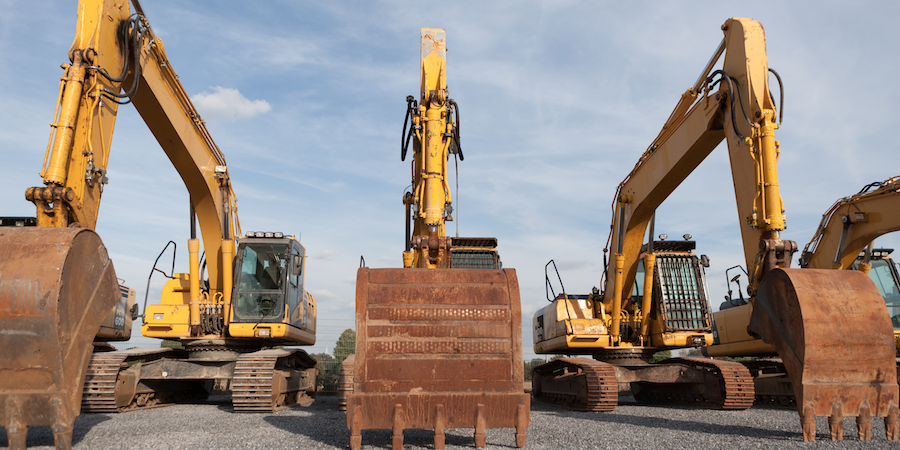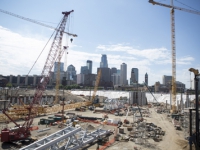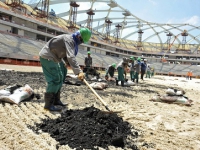As Industrial Hygiene and Safety Professionals, we introduced the idea of viewing safety through a performance-based looking glass and the value it brings by increasing our sphere of influence across the multiple organizational disciplines. Safety should not be viewed as an “add in” or even a “priority” because priorities change based upon inputs and conditions. The same can be said about statements such as “Safety is our number one goal” since goals change as well. Most in our profession will agree with the premise that “safety must be a value” for lasting success and remain a constant regardless of the inputs and conditions. How can we be successful in creating the culture and mindset needed to drive this value statement?
Reshaping the Construction Industry
May construction employment, April spending hit 6-year highs; most metros add jobsEditor’s note: Construction Citizen is proud to partner with AGC America to bring you AGC Chief Economist Ken Simonson's Data DIGest. Check back each week to get Ken's expert analysis of what's happening in our industry.Nonfarm payroll employment increased by 280,000 in May, seasonally adjusted, and by 3,058,000 (2.2%) over 12 months, the Bureau of Labor Statistics (BLS) reported on Friday. Construction employment rose by 17,000 and 273,000 (4.5%), respectively, to 6,387,000, the highest level since February 2009. Residential construction employment (residential building and specialty trade contractors) climbed by 8,500 for the month and 149,000 (6.5%) over 12 months. Nonresidential employment (building, specialty trades, and heavy and civil engineering construction) increased by 8,600 and 124,300 (3.3%), respectively. Average hourly earnings of all employees in construction rose to $27.34, a gain of 2.7% over the past year, up from 2.3% in the previous 12 months and 1.3% from May 2012 to May 2013.
June 08, 2015
The construction industry unemployment rate has officially surpassed the national unemployment rate. Between April 2014 and April 2015, nearly 300,000 jobs have been created in the construction industry, and the construction industry unemployment rate is the lowest it has been since 2006. April of this year alone brought in more jobs than “any other industry except professional/business services and healthcare.”The numbers were better than what the construction industry was anticipating. In March, 9,000 jobs were lost, a little under 8,000 jobs just in the nonresidential building field. Researchers believe the small slump was due to the inclement weather seen across the United States during that time.The strongest numbers came from residential building.
June 05, 2015
A New York Times report this week digs into why construction deaths have been rising in New York. The numbers are unfortunate and they underscore the need for better-trained craft professionals on jobsites in NYC and all around the world. From the report:"Eight people have died in construction-related accidents this year, according to the city’s Buildings Department, as many as in all of 2014; the year before, three died. Not since 2008, during the height of the last building boom, has the number of construction accidents been so high, when a rash of episodes, including two falling cranes, claimed 19 lives.The number of accidents has also been on the rise, with 231 in 2014, up 24 percent from the year before. (Accident figures for 2015 were unavailable.)"
June 04, 2015
ABC Houston Industrial Committee is hard at work figuring out the best way forward for construction training. They have recommendations for the full ABC Houston Board.
June 03, 2015
The president of FIFA, Sepp Blatter, resigned today after being re-elected in the midst of an unprecedented scandal over the awarding of the 2022 World Cup to Qatar.Scandal is not new to the global scene, nor is the seedy underbelly of the construction industry in the countries where major facilities are needed to host the games. In this case, there are five stadiums being built for Qatar 2022, but recently, amid the scandal, the underbelly of global construction has once again been exposed in an investigative report by Australian Broadcasting Corporation (ABC).In a recent article by ABC, the kafala system of forced labor, “kin to slave labor” even though the world’s richest per capita country, “is spending $260 billion building the stadiums, public transport systems, freeways, hotels and apartments to stage the tournament.”
June 02, 2015
The following article originally appeared in the June newsletter to clients of Kiley Advisors, LLC for the purpose of providing the latest leading indicators and industry issues to those clients. Reprinted with permission.The Census Bureau recently announced Houston as one of the top ten population gainers in the US in 2014, alongside several other Texas cities. Unfortunately, that distinction will likely not be repeated in 2015, as economists continue to lower their projections for our region. Dr. Bill Gilmer, with the Institute for Regional Forecasting, recently released his revised forecast with two scenarios. The first has oil prices recovering by the beginning of 2016, and puts Houston’s job growth at 13,000 jobs for 2015. The second scenario has oil prices recovering in mid-2016, which puts Houston’s job growth at 13,000 jobs for 2015 and again for 2016. After experiencing over 100,000 jobs added in 2014, Houston’s growth has certainly stalled.Construction continues at a steady pace, but the drop off is coming. The most recent City of Houston permits show a drop of more than 20% in new non-residential construction when compared to a year ago. Renovation work continues to exceed 2014 levels, but the drop in new construction is a combination of unsustainable levels of construction in some markets in 2014 normalizing, along with the uncertainty surrounding the oil prices and its impact on Houston.
June 02, 2015
As Safety Professionals, we are dedicated to the protection of people, property and the environment. Our success is often measured in the amount of human suffering we prevent as we chart OSHA rates for recordable injuries, lost work day cases or cases of restricted work activity. We attempt to quantify our success as we compare past results against current performance. If the needle trends downward, we pat ourselves on the back, notify management and tout the success of our safety efforts. We become singular in focus as if the success or failure of our organization is predicated on this sole outcome. This type of thinking causes us to be pigeon holed in our world, many times, outside of the heartbeat of the organization and its leadership. We are brought into the Board room to report on a certain situation and promptly escorted out once our information and expertise is no longer needed. It is a sad reality that this is how a large majority of safety professionals operate. If this is how you operate, the question becomes, “why should I change and if I do, how do I change?”To address the question of “why should I change,” I challenge you to view safety through a performance based looking glass. As safety professionals, much of our time is spent on research of standards and creating policies and procedures to ensure compliance with applicable governmental standards. This methodology breeds a compliance or prescriptive based approach that restricts our influence throughout an organization.
June 01, 2015
House and Senate negotiators in Austin are now trying to hammer out a final deal on the financing of $3 billion worth of construction projects at colleges and universities all over Texas.There is broad agreement that funding new classroom space is the right thing to do. On a vote of 26 to 5, the Texas Senate passed a bill authorizing the spending aimed at relieving overcrowded campuses. The Texas House also overwhelmingly passed the legislation. But, just as in past legislative sessions, the devil’s in the details when it comes to this issue.As of right now, about $73 million separates the two plans. That’s why a conference committee has been appointed to craft a deal that will then be presented to both the House and Senate before it can be sent to Gov. Greg Abbott for his signature.
May 29, 2015
Construction jobs increase in 40 states in April; materials, labor costs dip, IHS findsEditor’s note: Construction Citizen is proud to partner with AGC America to bring you AGC Chief Economist Ken Simonson's Data DIGest. Check back each week to get Ken's expert analysis of what's happening in our industry.Seasonally adjusted construction employment rose in 40 states and the District of Columbia from April 2014 to April 2015, declined in seven and remained level in Indiana, Oregon and Vermont, an AGC analysis of Bureau of Labor Statistics (BLS) data released on Wednesday showed. California again added the most construction jobs (42,600 jobs, 6.4%), followed by Florida (32,200, 8.2%), Texas (25,300, 3.9%), Washington (18,700, 12.0%) and Michigan (14,800, 10.6%). Idaho again added the highest percentage of new construction jobs (12.4%, 4,400), followed by Washington and Michigan. The largest and steepest percentage losses again occurred in West Virginia (-4,400, -13.1%) and Mississippi (-3,200, -6.3%). U.S. construction employment rose 4.6% over the period, BLS reported on May 8. Despite the strong, widespread gains, only five states have topped pre-recession highs for construction employment:
May 29, 2015



.jpeg?itok=6uFZXEBH)





.jpeg?itok=4Vi_1nJG)
































